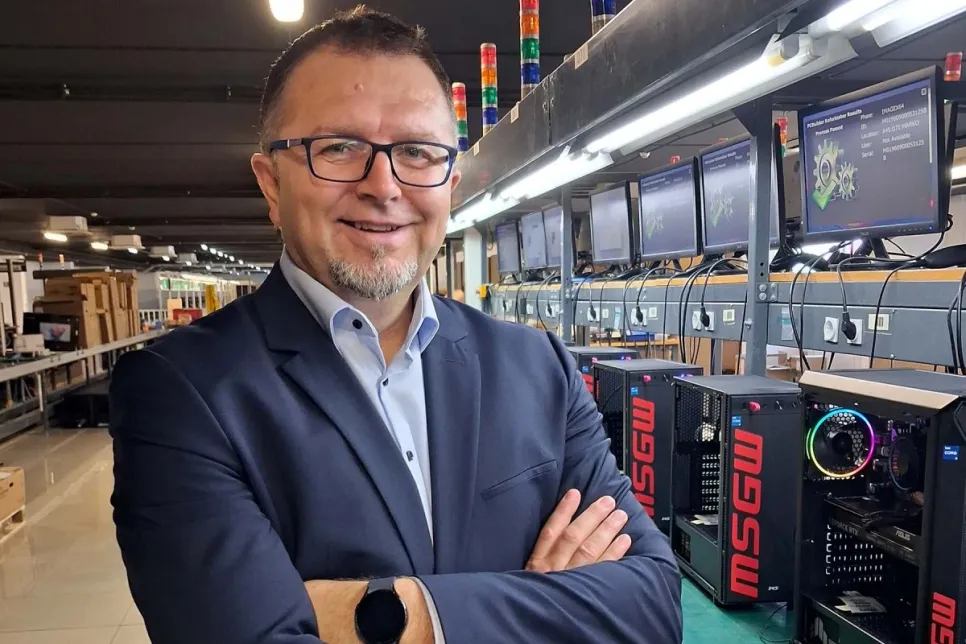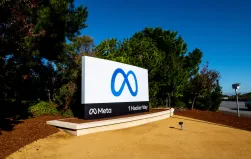On the occasion of the 20th anniversary of the start of MSGW computer production, ICT Business spoke with Bruno Jozić, a member of the Management Board of M SAN Group, whose portfolio includes MSGW computers and peripherals under the MS brand. From its modest beginnings, MSGW has grown into a respectable manufacturer with a significant market share, producing more than 20,000 computers annually, which clearly confirms that consumers recognize reliability, quality, and competitive pricing.
Today, two decades after the first MSGW computer rolled off the production line, it is evident that this domestic brand is no longer a small player. MSGW has established itself as a serious competitor in the market, capable of standing shoulder to shoulder with major global names.
Jozić emphasizes that the key lies in shifting the focus from low prices to the concept of “best value for money,” which encompasses professional consulting, component optimization, and reliable after-sales support.
How do you assess the current state of the computer and component market in Croatia and the region?
In the past four to five years, the market has been stable without major fluctuations in overall demand. However, one segment stands out in particular – gaming computers. Here, we record continuous growth in interest and sales, driven by the growing number of users who see gaming not only as a form of entertainment but also as a serious hobby or even a professional career. This trend also stimulates the development of advanced components, further energizing the market in this segment.
What are the key trends currently shaping demand and supply?
One of the main drivers of demand and supply is rapid technological progress. Each new generation of processors, graphics cards, and other components brings a noticeable leap in performance, creating user expectations for continuous improvement. At the same time, manufacturers and distributors adjust their offerings to keep up with innovations, either by optimizing existing models or introducing new product lines. Additionally, there is an increasing focus on energy efficiency, compactness, and connectivity, which further guides market development and demand.
Do you notice growth or decline in the sales of desktops, laptops, and all-in-one solutions?
In our case, sales of desktops and all-in-one solutions have been stable for several years, without major deviations. The biggest change occurred with laptops during the COVID-19 pandemic, when we recorded a strong surge in demand, which was expected given the shift to remote work and online learning. However, as circumstances normalized, demand returned to previous stable levels. In short, the market, after a temporary surge, has returned to equilibrium.
How do global supply chain and component price issues affect the market?
Serious disruptions in distribution and production generate challenges in the delivery and pricing of components, particularly evident with graphics cards. In these cases, when a new series of cards is released, manufacturers are often unable to produce or deliver sufficient quantities to meet market demand. A similar situation was seen in the automotive industry.
What do users expect today from major established brands versus smaller local brands?
From major, globally recognized brands, users still expect reliability, top build quality, and long-term support. On the other hand, smaller brands are increasingly sought after for flexibility and individualized approaches, as users want configurations tailored to their specific needs—whether for gaming, multimedia, or business use. Fast delivery, efficient support, and competitive pricing are additional reasons why such solutions are becoming increasingly attractive compared to “big names.”
Is the emphasis more on price, warranty, support, or innovative solutions?
In our market, price still plays one of the key roles in purchasing decisions, especially among end-users or small businesses. However, along with competitive pricing, customers increasingly demand extended warranties or after-sales support, which we provide. Innovative solutions also stand out, particularly in professional and business segments, where fast service and system customization to specific needs are crucial advantages. While price often “opens the door,” the final decision is increasingly based on a combination of factors such as trust and support.
How does the approach of global brands differ compared to local manufacturers like MSGW?
Global players primarily rely on brand recognition and a reputation for stability, which gives customers additional confidence when choosing. MSGW, however, sees its advantage in flexibility and customization. What we offer our customers are modular solutions, faster responses to market demands, more competitive prices, and a more personal approach. This combination of quality, accessibility, and agility is increasingly valued and recognized by customers.
What are the main advantages and disadvantages of choosing between “brand name” and “white label” solutions?
Flexibility is the key to our success. We are here for our customers, offering customization options that no “brand name” can provide to the same extent. Large brands often come with limited customization possibilities and higher prices due to predefined configurations. White label solutions offered by MSGW stand out with flexibility, modularity, a personalized approach, and, of course, competitive pricing.
How do you tailor computer solutions to the specific needs of different users—for example, business, education, gaming, or creative sectors?
In cooperation with our partners, we define specific requirements for each segment from the early stages, whether it is business users seeking reliability and security, the education sector valuing simplicity and accessibility, gamers expecting top performance, or creative professionals prioritizing strong graphics and fast processing.
Based on this “pulse check,” we shape our custom solutions, choose optimal components, adapt configurations, and provide support aligned with users’ challenges. Our approach is always based on partnership, ensuring customers get maximum value within their business or personal model.
Can you provide specific examples of customization—from processor selection to software solutions?
Customization always starts with analyzing end-user needs. For business users, we often suggest configurations focused on reliability and stability, such as Intel Core i5 or AMD Ryzen 7 processors combined with fast SSD storage and professional software for document management, virtualization, or cloud operations.
For gamers, the focus is on powerful multi-threaded processors with high-end graphics cards from the NVIDIA GeForce RTX series, high-frequency RAM, and advanced cooling systems. For creative professionals (designers, video editors), we offer workstations with strong GPUs such as NVIDIA RTX A-series, larger RAM capacities, and similar features.
All components and solutions are carefully selected in collaboration with the customer, ensuring the configuration fully matches their real-world environment and workflows.
How important is consulting and support before purchase?
Consulting and support before purchase are crucial to our process. At this stage, together with the customer and our partner network, we learn their needs, ask the right questions, and help them make the best decision. This ensures every buyer gets a solution that truly suits them without compromises.
What does the process of analyzing needs and recommending optimal components or configurations look like?
The process begins with detailed conversations with customers. Through consultations, we gather all relevant information, from technical requirements to performance preferences, budget, and future usage. After analyzing the data, our experts carefully choose the components that best meet these requirements, aligning everything into the optimal final product.
What should users pay special attention to when selecting the right computer components—for both end-users and business buyers?
I would say two aspects are crucial: quality and optimization. It is important to choose verified components that guarantee reliability and long-lasting performance. Equally important is how these components function together within the entire system. Optimization ensures that all parts—from processor and memory to storage and graphics—work harmoniously without bottlenecks.
Which are the most important components to consider when assembling or purchasing a computer (processor, RAM, SSD/HDD, graphics, power supply, etc.)?
In a computer system, no component is unimportant. Every part is essential. For example, if you choose a strong and high-quality CPU, you should not compromise by using the cheapest motherboard or neglecting the power supply and case. One of the biggest mistakes users make today is pairing a powerful CPU and GPU with a low-quality motherboard or inadequate power supply.
How important are component compatibility, future upgrades, and long-term investment value?
Compatibility is critical because even top components cannot deliver optimal performance without it. In every project, we pay special attention to ensuring all elements are aligned for reliable and efficient operation without technical limitations. Furthermore, more users today think long-term, so upgrade potential is becoming a key factor. With the right motherboard, power supply, and case, we leave room for future expansions or replacements. Of course, this depends on the pace of technological development, but a good initial strategy extends the system’s lifespan and makes the investment more cost-effective.
How do you balance budget and performance for different customer profiles?
By offering a wide spectrum of configurations, we ensure the needs of all customer profiles are met. MSGW today delivers exceptional quality at affordable prices across all categories and price ranges. We like to say we truly offer the “best value for money.”
The computer peripherals segment (keyboards, mice, headsets, webcams, monitors, etc.) is extremely dynamic—what do customers seek most, how is the offering evolving, and what are M SAN’s plans through MSGW and its MS peripherals portfolio?
Within the M SAN portfolio, we offer a wide range of peripherals under our MS brand, with a strong presence in both office and gaming segments. Day by day, we refresh our offering and adapt to the market, aiming to deliver the best quality at the most affordable price for our end-users.
What are the main customer preferences regarding ergonomics, design, functionality, and price?
Customers want functional, ergonomically designed peripherals with excellent design at the best price. High performance is especially important in gaming, and this is what guides us when selecting and developing our product range.
What do gaming users seek most compared to business users or educational institutions?
In gaming, quality, top design, performance, and RGB lighting are the main demands. Business users and educational institutions, on the other hand, focus more on durability, functionality, and classic design when selecting their optimal solutions.
What are the key trends in peripherals—for example, wireless technologies, RGB lighting, modularity...?
In peripherals, RGB lighting remains one of the most prominent trends, particularly in gaming. Users want personalization and visual appeal, and RGB elements have become almost indispensable in keyboards, mice, headsets, and even mousepads. Wireless is increasingly becoming standard, especially for mice and headsets. Advances in batteries and low-latency technologies now allow users not to compromise between practicality and performance. Modularity and customization are also rising trends, from replaceable switches on mechanical keyboards to customizable controllers and accessories. In short, the emphasis is on a combination of functionality, aesthetics, and flexibility, enabling users to fully personalize their experience.
How do you differentiate from global competitors?
Our advantage lies in a proactive approach, quick adaptation to market changes, and close collaboration with customers and partners. Unlike global brands, we strive to be faster, more flexible, and more price-competitive without compromising quality. Our added value is also in the fact that we can react faster to specific customer needs and provide faster technical support, which customers greatly appreciate.
Can you announce new products or solutions from MSGW and the M SAN peripherals portfolio in the coming period?
The MSGW team continuously works on new solutions, which is why we can regularly introduce new computer configurations that follow the latest technological trends and market needs. In addition, by the end of this year, we are preparing a special surprise for our customers and partners. While I cannot yet reveal details, I can say it will represent a significant step forward in the gaming segment—but more on that soon.



















